Hello Engineers. Here we are going to discuss 10 amazing sensors must-haves. But, before focussing on these 10 amazing sensors, we need to know a bit about sensors.
What is a sensor?
In automation and instrumentation, sensors are the main sensing components of a system to observe a certain environment and generates equivalent electrical signals. These signals can be digital/ analog signals, which can help a control system to make decisions based on those observations.
In context with electronics, sensors are used to sense and generate an equivalent output signal. They are basically like the eyes, nose, ears, and touch of an autonomous system.
So, in this article, we basically going to cover such 10 amazing sensors that are a must-have.
10 amazing Sensors for an electronics engineer
If you are working in the field of automation and instrumentation, you might already know the value of sensors. Here we are discussing some of them below. We will discuss their basic working concepts, and principles, with architecture.
Infrared Obstacle Sensor / IR Proximity sensor
The IR obstacle sensor or Infrared proximity sensor is one of the most common and useful sensors used in many applications. The sensor works on a +5v DC supply. An IR obstacle sensor basically has an Op-amp IC, with one IR emitter, LED that emits the infrared light, and an IR photodiode(IR receiver) to sense the infrared light bounced back by the obstacle.
The photodiode then behaves just like an open valve, now the signal through it goes to the op-amp IC, which produces a TTL output in proportion to the input signal and sensitivity provided by the IR photodiode. The output of the sensor goes to a computational system which can be a microcontroller, microprocessor, or any other ICs or analog system.
This is how an IR obstacle sensor can be used to measure obstacle proximity and detection. The usual range of its operation is a maximum of 15 centimeters.
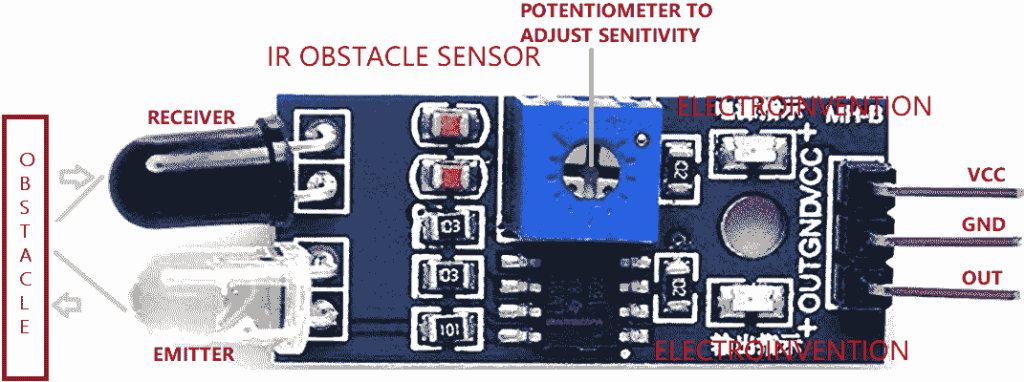
Applications
- Obstacle avoidance Robo project
- Line Follower Robo
- Automatic smart Washbasin Tap
- Other applications like automatic flour mill, Smart automatic doorbell.
PIR Sensor (Pyroelectric Infrared Sensor/ Passive Infrared Sensor)
A PIR sensor is a kind of motion detection sensor that can detect any kind of motion in the environment surrounding it without being physically connected to anybody.
It is called Passive Infrared Sensor because it doesn’t need to be connected to the moving bodies to detect the motion. It uses a pair of pyroelectric sensors to detect the heat in the surroundings.
The term”Passive” means that the sensor doesn’t emit its own IR radiation, instead, it just passively detects the radiation coming from the surroundings.
For example, whenever a human has entered a room, the IR radiation in the room is changed engaging the sensors. This then makes the sensor produce a trigger signal at its output for a set time period. This signal is given to any microcontroller, logic circuit, or any other digital IC.
PIR Motion Sensor.
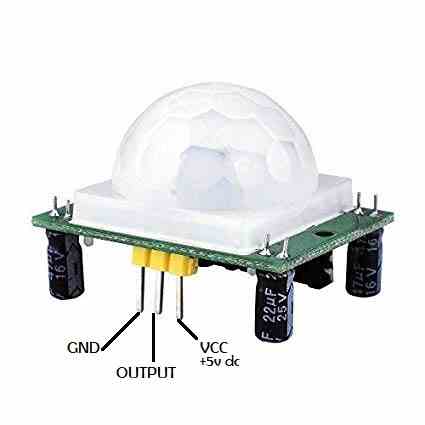
Applications of PIR Sensor
- Motion sensor Lights in conference rooms and Halls.
- Motion Sensitive Security Alarms or Theft alarms
- Smart Door Alarms,
- Smart Vehicle detection Street Lights
Vibration Sensor SW-420

The SW-420 is a vibration sensor used for the detection and measurement of any motion due to vibration. Unlike PIR, it needs to be there physically vibrated with the body to detect the vibrations.
The SW-420 vibration switch senses the magnitude of the vibration in its environment. It basically responds to the vibration by providing inner electrical connections according to the vibration.
Usually, the sensor is in a closed state when no vibrations are sensed. When the vibration is sensed the inner electrical contact is one and close according to the vibration. This makes the rise and low of its resistance.
The sensor employs a comparator to measure this vibration. The output is provided to a microcontroller which can be programmed according to the rigger intensity level of the vibrations.
Applications of a vibration sensor
- Smart vehicles
- Vibration sensing
- Earthquaqe detection and measure
Gas/ Smoke Sensor
A smoke sensor senses a certain range of gases, smoke in the environment for a certain scope of coverage. Usually, there is a wide range of Gas and smoke sensors with each having capability to sense certain gases.
There is a wide range of Gas sensors available, MQ series:
- MQ-2 – Methane, Butane, LPG, smoke
- MQ-3 – Alcohol, Ethanol, smoke
- MQ-4 – Methane, CNG Gas
- MQ-5 – Natural gas, LPG
- MQ-6 – LPG, butane gas
- MQ-7 – Carbon Monoxide
- MQ-8 – Hydrogen Gas
- MQ-9 – Carbon Monoxide, flammable gasses
- MQ131 – Ozone
- MQ135 – Air Quality (CO, Ammonia, Benzene, Alcohol, smoke)
- MQ136 – Hydrogen Sulfide gas
- MQ137 – Ammonia
- MQ138 – Benzene, Toluene, Alcohol, Acetone, Propane, Formaldehyde gas, Hydrogen
- MQ214 – Methane, Natural gas
Here we will be mainly discussing the MQ-2 sensor.
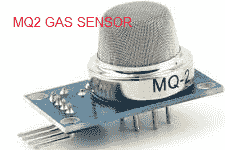
MQ2 is a Gas/smoke sensor that measures the gas concentration to detect gas. It is also based on the concept of ionization type smoke detectors. MQ2 is a gas sensor one of amongst MQ series of gas sensors.
The material used in MQ2 is SnO2 which has lower conductivity coated by tin and is mainly enclosed in a steel sieve or mesh. With the Gas concentration rising, the conductivity of the material also rises.
The change in conductivity results in a change in output. When smoke enters the sensor, the sensing element’s resistance changes, which makes it possible to detect gas.
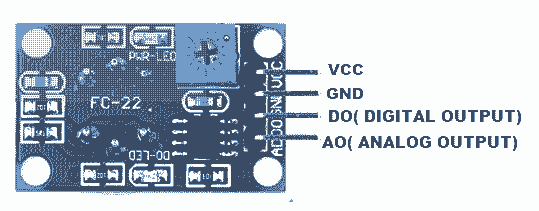
There are 6 terminals connected to the sensing element. Two leads work to heat element and the other 4 are for output. It can detect many kinds of gases like propane, butane, LPG, Hydrogen, Smoke, etc. A very commonly used smoke sensor is MQ2.
Application Of Gas sensors
- Gas/Smoke detection Alarms
- Fire Safety Alarms
- Automatic ventilation exhaust systems,etc.
Humidity Sensor (DHT11 and DHT22)
The DHT11 digital temperature and humidity sensor module is a composite Sensor that provides a calibrated digital signal output to measure the temperature and humidity. Working on a 3.3v – 5v DC.
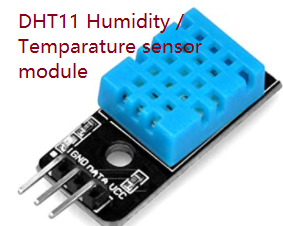
It senses the humidity in the atmosphere with an accuracy of 95%. Also measures the temperature from 0-50 with an error rate of ± 2℃.
There is another humidity and temperature sensor, DHT22 which is better in every aspect as compared to the DHT 11. Work is the same, but the accuracy and all other aspects are way more improved than DHT 11. Of course, with better quality comes the increased costs, so DHT22 is a bit more expensive module.
Applications of a Humidity Sensor
- Room Temparature meter
- Measuring Humidity
- Measuring the temoarature
- Marines
Ultrasonic Sensor Module, Ultrasonic distance measuring transducing sensor module
The ultrasonic sensor module is used to measure the distance of the obstacle in the scope of its vision through the SONAR(Sound Navigation Ranging) technology.
The very popular HC-SR04 ultrasonic sensor uses sonar to measure the distance to an object.
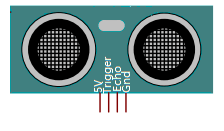
This sensor is capable of non-contact range detection from 2cm to 400cm with high accuracy and stable readings(0.3cm).
Basic Features and parameters
Operating Voltage : +5V DC
Quiescent current : <2mA
Effectual angle: <15°
Ranging distance : 2cm – 500 cm
Resolution : 0.3 cm
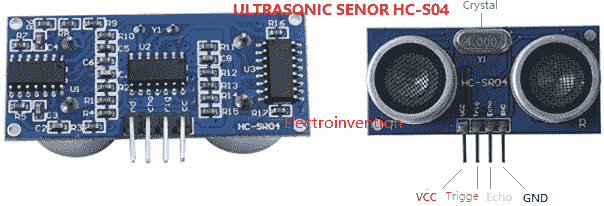
The basic Working principles include(from the datasheet)
- Using IO trigger for at least 10us high level signal,
- The Module automatically sends eight 40 kHz and detect whether there is a
- pulse signal back.
- IF the signal back, through high level , time of high output IO duration is
- the time from sending ultrasonic to returning.
- Test distance = (high level time×velocity of sound (340M/S) / 2
Applications of Ultrasonic sensors
- Ships
- Submarines
- Smart Vehicles
- Water Level Detection system
- Industry Level based precision manufacturing robots,’
- many others.
Real Time Clock(RTC Module)
A real-time clock sensing module is a real-time based clock module to allow the microcontrollers capability of controlling things in a real-time clock control.
This is a very important module to be used where we need to have a real-time clock-based embedded system.
Different RTCs are there in the market like DS1307, DS3231. DS3231 Module is a Bread Board friendly extremely precise I2C real-time clock Module. This module is made using DS3231 RTC and AT24C32 EEPROM integrated with a temperature-compensated crystal oscillator.

It has a small Lithium battery coin cell slot, to maintain its real-time clock. If the main power failure, the device can continue to provide accurate timing and temperature, performance is not affected. When the main power re-power or voltage value returns to within the allowable range, the on-chip reset function can be used to restart the system microprocessor/controller.
Heart rate sensor/ Pulse sensor
A heart rate sensor/pulse sensor is an easy-to-use heart rate and pulse monitoring sensor.
Heartbeat Sensor consists of a sensor unit and a control circuit unit. The sensor unit of the Heartbeat Sensor is an IR LED and a Photo Diode(IR sensor/ receiver) placed in a clip. In the Control unit, there is an Op-Amp IC and few other components that help in connecting the signal to a Microcontroller.
The non-inverting output from the photodiode is compared and understood by the op-amp ic and this all generates a signal that helps the microcontroller to read the heartbeat, pulses.
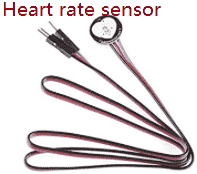
The monitoring of heart rates and keeping track of athletes, patients are needed to be done. It should be done very accurately, so basically, a heart rate sensor is used to precisely monitor many things like heart rate pulses, body temperature.
To have a precise Pulse sensor that can be put on the finger and turned on, the output is to be connected to the microcontroller.
Eg. Pulse Oximeter
Color Sensor
Sometimes in some projects, its need to detect the color, to perform some further control. A color sensor module is used to detect the color of any object on which the sensor’s light is fallen and reflected.
A color sensor is a type of color sensing module which emits light from a white light source and then detects the light reflected back from a particular object with a receiver.
The most common type of TCS230 is also known as TCS3200 and TCS34725.
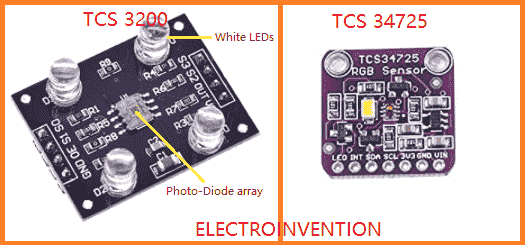
Applications of a color sensor
- Color detection and gradings
- Identification of vertain products based on packaging colors
- color monitoring other applications needs to detect the true color in order to perform some main goal task.
Hall Effect Sensor
Hall effect sensor is a sensor that detects the presence of a magnetic field and its magnitude by using the hall effect. The output voltage of a Hall sensor is directly proportional to the strength of the field.
The sensor senses and converts it to an output electrical signal which is further understood and processed by an embedded system.
The most common type is A3144.
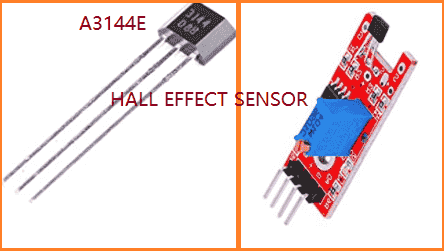
Basic specs according to datasheet:
- Operating voltage: 4.5V to 28V (typically 5V) Output Current: 25mA
- Used for Automotive and Industrial Applications
- Output voltage is equal to operating voltage
- Operating temperature: -40°C to 85°C
- Digital output
Applications
- Hall effect switch
- Making a magnetic field threshold Switch
- Wheel allignment
- Detection of transmission speed
- Detexting the magnetic field and intensity to detect position of something.
Thank you all for reading.


